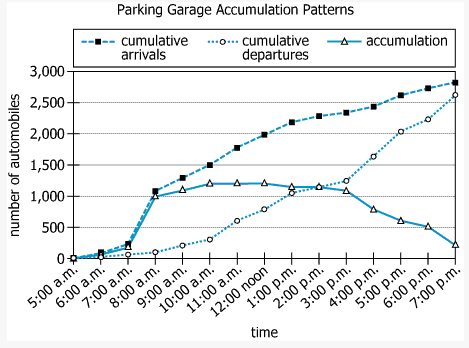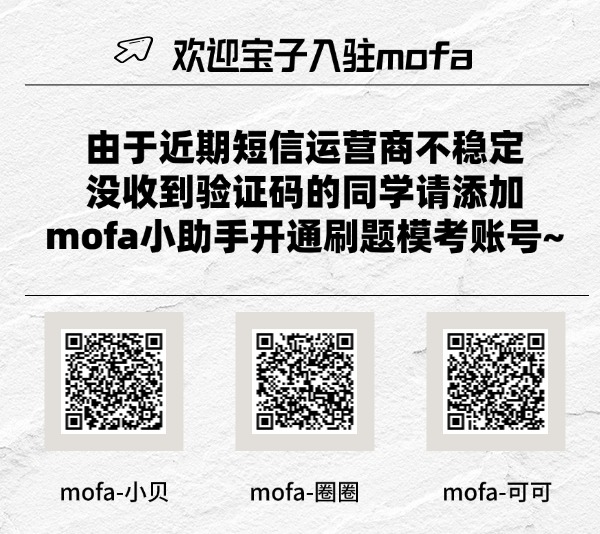City X conducted a one-day study of accumulation patterns in a city-owned parking garage that contains a total of 1,200 parking spaces. The graph summarizes the cumulative arrivals (number of automobiles that had arrived at the garage), cumulative departures (number of automobiles that had departed the garage), and accumulation (number of automobiles occupying the garage) at one-hour intervals from 5:00 a.m. to 7:00 p.m. on the day of the study.

To monitor congestion, especially during the morning, City X is considering installation of a detection system at the parking garage. The system’s components include detectors at each of the garage’s 1,200 parking spaces, together with software and hardware to communicate real-time parking data to city residents via the Internet. In particular, the detection system communicates three types of parking alerts: a Green Alert is in effect whenever accumulation is in the range 0–500; a Yellow Alert is in effect whenever accumulation is in the range 501–1,000; and a Red Alert is in effect whenever accumulation is greater than 1,000. For the detection system in this parking garage, City X estimates that the capital cost—the total cost associated with initial construction and implementation—would be $6,000,000, while the annual operating cost would be $800,000.
City X is also considering building a new parking garage to ease congestion at the existing garage. For the new parking garage, the city estimates the average (arithmetic mean) capital cost per parking space would be $15,000 and the annual average operating cost per parking space would be $400. The estimated life span of the new garage is 30 years, at which time major reconstruction or replacement would be necessary.
 mofa留学圈
mofa留学圈






 做题笔记
做题笔记
 暂无做题笔记
暂无做题笔记 提交我的解析
提交我的解析


